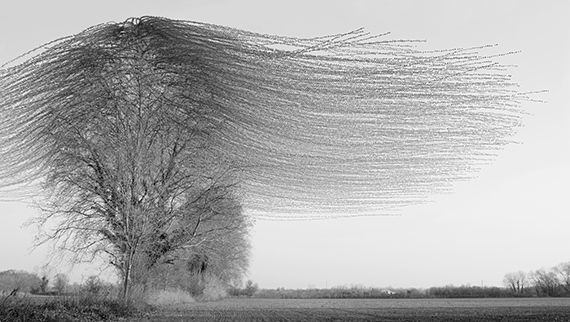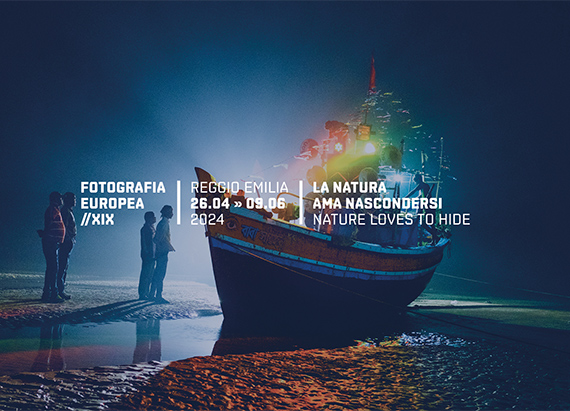
FOTOGRAFIA EUROPEA 2024 - XIX edition
Nature loves to hide
Lisa Barnard » Marta Bogdańska » Xavi Bou » Gregory Crewdson » Arko Datto » Matteo de Mayda » Paola de Pietri » Paola Di Bello » Karim El Maktafi » Lorenzo Falletta » Luigi Ghirri » Stefano Graziani » Franco Guerzoni » Silvia Infranco » Antti Karppinen » Jochen Lempert » Armin Linke » Susan Meiselas » Walter Niedermayr » Jo Ractliffe » Silvia Rosi » Natalya Saprunova » Helen Sear » Bruno Serralongue » Michele Sibiloni » Awoiska van der Molen » Yvonne Venegas » Terri Weifenbach » & others
Festival: 26 Apr – 9 Jun 2024
Fri 26 Apr
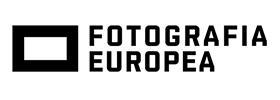
European Photography - Reggio Emilia
Corso Garibaldi 31
42121 Reggio Emilia
+39.0522-456249
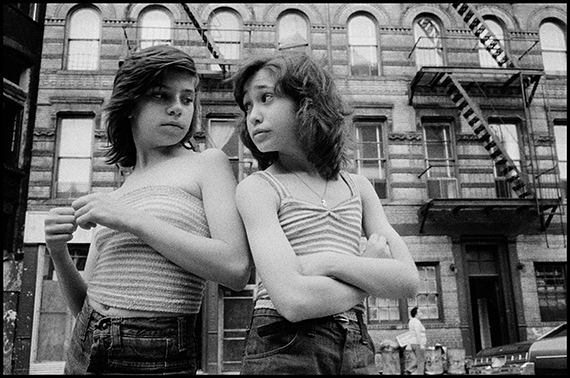
FOTOGRAFIA EUROPEA 2024
‘NATURE LOVES TO HIDE’
Reggio Emilia
26 April – 9 June 2024
Preview 26 April
Inaugural events 26–28 April 2024
Dedicated to the interconnections between humans and nature, and to the transformations human beings can undertake beyond an approach of dominant control, the 19th edition of the Reggio Emilia Festival returns to invite us reflect on pressing critical issues
Palazzo Magnani, Chiostri di San Pietro, Palazzo da Mosto, Villa Zironi, Palazzo dei Musei, Biblioteca Panizzi, Spazio Gerra and the spaces of the Circuito OFF host exhibitions by both established photographers and young talents
From 26 April to 9 June 2024, Reggio Emilia will once again observe the changes to the contemporary sphere through the eyes of great photographers and young practitioners with the 19th edition of FOTOGRAFIA EUROPEA: the festival promoted and organised by Fondazione Palazzo Magnani and the Municipality of Reggio Emilia, with support from the Emilia-Romagna Regional Council.
Nature loves to hide is the theme chosen by the Festival’s artistic board, this year made up of Tim Clark (editor of 1000 Words), Walter Guadagnini (photography historian and Director of CAMERA – Centro Italiano per la Fotografia) and Luce Lebart (researcher and curator, Archive of Modern Conflict).
Drawing on the paradox expressed in a famous fragment by Heraclitus, the title seeks to encompass the power of a nature that so often conceals its essence right before our eyes, while increasingly revealing it in destructive ways, in a continuous process that may be understood as an oscillation between being and becoming. Through this edition’s many prestigious solo and group exhibitions, Fotografia Europea 2024 sets out to explore the connections between concealment and discovery that characterise our relationship with nature, imagining new narratives bound up in an eco-centric conception as opposed to an attitude of dominant control that our species exercises over the planet, so as to understand the current dynamics and the new directions to be taken.
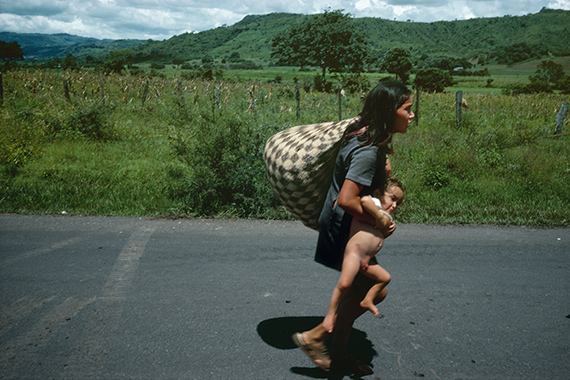
© Susan Meiselas/Magnum Photos
EXHIBITIONS
PALAZZO MAGNANI
corso Garibaldi, 29
Susan Meiselas » Mediations
in collaboration with Magnum Photos
Susan Meiselas (1948, Baltimore, USA), a member of Magnum Photos since 1976, became known for her work in the conflict zones of Central America (1978–1983), and in particular for her powerful photographs of the Nicaraguan revolution. Endlessly exploring and developing narratives, she involves her subjects in her works, often working over long time spans and covering a wide range of subjects and countries, from war to human rights issues, and cultural identity to the sex industry.
This exhibition, entitled Mediations after her eponymous work, is the most comprehensive retrospective ever to be held in Europe, bringing together a selection of works from the 1970s to the present day.
This exhibition reveals Meiselas’s unique approach as a photographer who has constantly questioned the status of her images in relation to the context in which they are perceived, showing how she moves through different scales of time and conflict, ranging from the personal to the geopolitical dimension.
CHIOSTRI DI SAN PIETRO
via Emilia San Pietro, 44/c
Sky Album. 150 years of capturing clouds
Curated by Luce Lebart with Michelle Wilson
Thanks to Timothy Prus and David Thomson for their inspiration and vision
A co-production by Fotografia Europea and Archive of Modern Conflict
At the dawn of photography, when photographs required long exposure times, taking images of clouds was near impossible. It wasn’t until the second half of the nineteenth century, with improvements in technique and technology, that photographers were able to start capturing the infinite variability of clouds. So began an avid fixation with the subject, an affinity that has since generated innumerable images: often for scientific purposes, such as developing an international naming system or visualising cloud movement on a planetary scale, but also for impassioned artistic purposes. Noted are the abundance of serial, repetitive and obsessional approaches, with some photographers dedicating years of their lives to framing the sky. The ghost of abstraction looms over these images, and a sense of focus proves elusive: in a photograph of a cloud, how is blurriness gauged, or droplets distinguished from grain or pixelation?
The exhibition celebrates the breadth and beauty of images of clouds and the uniqueness of the passionate practice – of scientists, amateurs and artists alike – of photographing the sky. Through this, the exhibition draws a picture of the history of the sky, the history of photography and the ways in which they are intertwined.
Helen Sear » Within Sight
Helen Sear presents a suite of interrelated multiple and composite works that explore the dissolution of a single-lens perspective associated with the camera lens.
Unlike the fixed position of the photographer in early landscape photography, she uses her camera in a way that is closer to a scanner moving through space. From a monumental woodstack to a giant pine tree fallen in the forest, Sear explores a sense of connection and reanimation through multiple exposures and layers. She is a close observer of the changing elements that make up a landscape and her methods of recording and reconstruction visualise the experience of being present in nature, utilising all our senses in the act of viewing. Sear often denies a traditional foreground, midground and distance in picture-making, bringing the image almost to the surface of the eye, preferring to imagine elements in the landscape as other bodies where we might wonder who or what is looking at whom.
Yvonne Venegas » Sea of Cortez
Between two plateaus at the centre of the Baja California peninsula, due to the discovery of large quantities of copper in the land, the town of Santa Rosalía was founded in 1885. President Porfirio Díaz granted the concession to exploit the territory for fifty years to the French company Del Boleo. In 1930, Francisco Percevault Sobarzo, the second of four children of a French former catholic priest and a Yaqui woman, worked as an accountant at the El Boleo mine, and lived with his wife and four children in one of the houses built for his workers.
On 10 September 1931, the inhabitants who lived near the concrete dam that protected them from the passage of water were evacuated from their homes due to a hurricane that was approaching from the Pacific. Francisco, proud of the construction of his house and with a newborn baby, decided not to take the warning personally, but unfortunately, the dam gave way. Two of his children survived from his family when, holding onto a log, they managed to free the water flow: ten-year-old Manuel and his twelve-year-old brother, Rodolfo Percevault Ceseña, grandfather of Yvonne Venegas.
This project is a cross-genre documentary series poised between the family history of the artist and places that her ancestors inhabited, the territories that surround the Sea of Cortez, the people she encountered along the way, or local actors and dancers whom she collaborates with.
Arko Datto » The Shunyo Raja Monographies
The Shunyo Raja Monographies is an ongoing 9-year long-term photography trilogy that proposes three conceptually distinct ways of visualising the Bengal Delta, considered one of the ground zeros of climate change. The rising sea levels and surging rivers have submerged many islands in the region and put millions of people at risk of becoming climate refugees. This work visually maps the trajectory of those displaced, homes destroyed, schools collapsed, and landscapes lost due to erosion, sea level rise, and cyclonic activity.
The exhibition shows two of the three chapters of the story: the first is a photography project comprising portraits and landscapes, mapping erosion and sea level rise in the Bengal Delta across India and Bangladesh. The second is a photographic framework that creates an equivalence between the battle against climate change and the global war on terror, which both deal with invisible yet omnipresent omnipotent enemies that can strike anytime anyhow anywhere. Water is the element of terror here.
Matteo de Mayda » There’s no calm after the storm
An extreme weather event hit north-eastern Italy in October 2018. The Sirocco wind blew up to 200 kilometres per hour through the Dolomite valleys, knocking some 14 million trees to the ground. The incessant rain caused torrents to overflow, dragging logs and debris downstream. Overnight, the inhabitants of a number of mountain communities in Trentino, Veneto and Friuli-Venezia Giulia found their cellars flooded and even their houses torn apart by the winds.
More than five years later, the consequences of storm Vaia are still visible and tangible. The slopes of various mountains are barren. The remaining forests have been invaded by the spruce bark beetle: a parasite that feeds on wood. Without the plants, there is no protection against landslides and avalanches. While experts and locals are rolling up their sleeves to try and bring the situation back to normal, the total economic damage has been estimated at three billion euros.
Produced in collaboration with journalist Cosimo Bizzarri, the TESAF and DAFNAE departments of the University of Padua and the ISPA Grant 2021, There’s no calm after the storm investigates the long-term consequences of an extreme weather event and the fragile balance between human action and the resilience of ecosystems.
Jo Ractliffe » Landscaping
Landscaping comprises black and white images taken during long-distance drives along the west coast of Southern Africa. In Landscape and Power (2002), W.J.T. Mitchell argues that ‘landscape’ should be considered a verb rather than a noun; something that shapes and is shaped by social and political practices. Jo Ractliffe moves away from this idea, which speaks to a view rather than actual space, conflating it with the actual place itself. But ‘landscape’ is not geography or space out there; it’s already a contrivance. In her work, she still finds herself disclaiming the term in an attempt to wrestle her photographs away from stereotypical conventions. To speak of landscape in terms of beauty, or even unsightliness for that matter, is to observe rather than participate, to reduce place to a concept rather than lived experience. In the first draft of this statement, she described the Atlantic coastline as arid and windswept. Then she realised that her portrayal unwittingly reiterated those of colonial settler narratives that propagated an ‘empty land’ – with the frontiersman, the intrepid explorer bent on conquest and discovery. Many towns in Namaqualand came about with the ‘discovery’ of copper in Okiep in 1685. By using the word 'landscaping’, she has tried to activate the idea of landscape, to make of it a ‘doing thing’ that asks us to consider where we look from and what is it we think we are looking at. The series was realised with the support of the Lewis Baltz Research Fund 2022.
Natalya Saprunova » Permafrost
Since 2019, Natalya Saprunova has been retracing the Great North route, the one of her childhood, to reach the Saami tundras on the Kola Peninsula in Russia, close to Finland and Norway. In 2022, she discovered Yakutia in Eastern Siberia and its indigenous populations, the Evenki reindeer herders and the more sedentary Yakuts, who raise cows and horses. After a few years, her photographic project branched out: the entire Arctic is now in the lens of the Russo-French photographer, who is currently working in the Canadian Northwest Territories.
Gradually, Natalya Saprunova's images also began to incorporate scientists, who turn these isolated and remote areas into their grounds for experimentation, sampling sediment and permafrost. Summer temperatures are rising, the eternal snows are melting, the oceans are warming... Indeed, the permafrost contained in Arctic soils is melting more and more, releasing large quantities of greenhouse gasses which amplify global warming. Between dawn and dusk, the faded colors of Saprunova's photographs express the concerns of these communities.
Lisa Barnard » An Act of Faith: Bitcoin and the Speculative Bubble
Cryptocurrencies are an 'act of faith,’ lacking tangible evidence of a physical presence. There are just over 19.4 million (2024) Bitcoins in circulation. Of the total supply of 21 million Bitcoin tokens, 92.44% are already in circulation. Often labelled as a ‘speculative bubble’, Bitcoin is a high-risk digital asset that can circulate without the centralised authority of a bank or government. It continues to endure a consistent lack of support from mainstream economic dialogue. 2017 was a watershed year for ‘virtual currencies’, as Japan was the first country to support Bitcoin, allowing it to become a legal form of payment. Despite Western doubt, in Tokyo, a cult-like following of believers were at the forefront of creating both a social and aesthetic element to Bitcoin, bridging the void of human experience that continues contributing to its erratic market behaviour. When this project was completed in 2017, Bitcoin was worth around $900; by the following year, it had risen to over $13,000. At its peak in November 2021, one Bitcoin was worth over $60,000.
Although an act once possible by committed and capable individuals, the process of mining Bitcoin became ever more complex and energy-consuming as its market life continued. The result was an increasing influence of dedicated businesses and corporate powers, whose collective resources allowed the production process to be expanded, often relocating into purpose-built mining farms. One such company in 2012, Genesis Mining (which is no longer trading), chose to house their facilities in Iceland, which, much like Bitcoin, has a dynamic and highly volatile landscape, containing an invaluable abundance of cheap, geothermal energy that can support the hugely consumptive process of mining.
Terri Weifenbach » Cloud Physics
American photographer Terri Weifenbach’s long-term series is a luminous photographic consideration of atmospheric phenomena, visual perception and life on Earth. In Cloud Physics, she explores the vital interconnection of our planet’s clouds and the intimate forms and textures of its biological life.
The backbone of this work is a series of photographs (for which she received a Guggenheim Fellowship in 2015) produced at an American research facility used for the study and measurement of clouds, their origin, structure, particles and solar relationships. The exotic instruments she portrays are designed to express ephemeral atmospheric phenomena as sets of numeric data, yet Weifenbach's camera (and her way of seeing) renders our organic terrestrial world an unquantifiable mystery. The vibrant scenes of her wide-ranging images — tiny variations of light, humidity, fire and lightning; iridescent mists and vapors; glimpses of the animal kingdom and the plant world — are like myths-within-myths unfolding throughout the book, against a backdrop of endless weather events.
Bruno Serralongue » Community Gardens of Vertus, Aubervilliers
In a context of climate crisis and the collapsing of biodiversity, over 4,000 sqm of allotments were destroyed to allow for the construction of a training pool for the Paris 2024 Olympic Games. These community gardens are located less than two kilometers from central Paris, in Aubervilliers, Seine-Saint-Denis, France's most densely populated department with the fewest green spaces. This is only the first stage of a wider planned demolition: in total, over 10,000 sqm of gardens will be replaced by a Grand Paris Express train station and a new district of hotels and offices. A defense collective for the Jardins des Vertus, made up of the gardeners whose plots are threatened by demolition, was formed to oppose the proposed plans. A struggle lasting several months began at the end of 2020. The opposition grew and gained support from the press. As demonstrations were not enough, the collective decided to occupy the gardens on 23 May 2021, and the gardens were renamed ‘Jardins à Défendre’ (in reference to the ‘Zone A Défendre’). At the same time, legal action was initiated to try and overturn the building permit. But on 2 September 2021, the Gardens were evacuated by the police to allow for the demolition to start. However, in March 2022 the court ruled in favor of the gardeners and ordered an immediate halt to the works. Despite this victory, the destroyed gardens will not be replaced, as the city council opposes it. This struggle on a local scale (the gardens are tended to by low-income residents of the neighborhood) is linked to a wider awareness of the need to preserve liveable environments in the face of ecocidal projects.
PALAZZO DA MOSTO
via Mari, 7
Karim El Maktafi » day by day
Commission 2024
The inland areas of Italy constitute a vast portion of the country, occupying about three-fifths of the national territory, while hosting just under a quarter of the total population. These regions are extremely heterogeneous within themselves, sharing only their remoteness from major urban areas and services. The Apennine region of Emilia emerges here as an area of great interest, at the centre of initiatives aimed at acknowledging and enhancing specific forms of cultural heritage. This heritage is manifested through lifestyles deeply rooted in the slow cycles of the natural mountainside environment as well as through consolidated networks of mutual assistance.
The works on show in Fotografia Europea 2024, under the guidance of Karim El Maktafi, are set against this fascinating context. Nature loves to hide: this is the theme of the festival, which finds a privileged channel of expression in this very area. The profound interconnection between humans and nature, characterised by a relationship at once both strong and fragile, is revealed over the centuries through a profound bond that remains vital thanks to activities that continue to breathe life into these territories.
His exploration takes the form of a journey highlighting the intrinsic spirituality of people in harmony with nature, capturing the essence of a bond that persists over time and contributes significantly to the richness and diversity of this mountain region.
Index Naturae
curated by Stefania Rössl and Massimo Sordi (OMNE)
Index Naturae features 116 photo books published over the last five years exploring the theme of nature. The selection of the volumes and the chosen time span are the result of a research conducted on the basis of recent photographic projects developed by national and international authors who joined the project proposed by OMNE, the North East Mobile Observatory. The research delves into experiences on the theme relating to the five continents that share a specific reference in the origins of the photographer involved or in the place of investigation.
On the one hand, the collection represents a source of reflection on the current state of photography and publishing, while on the other hand, it identifies a body of research experiences offering very diverse points of view on the theme of the relationship between humans and nature in the contemporary world. In the relationship between places and subjects, photography in fact emerges through its own language and codes, and the authorial presence of the photographers in the exhibition points towards the construction of a collective work, conceived as a single body within an open structure, available to be read, investigated and interpreted also on the basis of some of the smallest details.
Marta Bogdańska » Shifters
Open Call 2024
The SHIFTERS project started as archival research and a collection of articles about animal spies. Suspicious squirrels, spying dolphins, misidentified storks, nuclear lizards, photographer pigeons – all these animals were accused of spying and appeared in mainstream media. Following the line of thought set by Éric Baratay, a French historian, who coined the term ‘history from an animal point of view’, it investigates and revisits the visual history of animals in wars and espionage, in services like the Red Cross or police. It analyses the meaning of the term ‘agent’ itself: a spy but also a subject performing actions. Taking into account such an interesting twist of animal agency, the project relates this multifaceted history of animals in war to that of their liberation and rights. The images used in this project are the ones circulating on the web, called ‘weak images’ by Hito Steyerl.
Marta Bogdańska proposes a selection of works from the SHIFTERS project that will showcase other-than-human animals as characters, as subjects with agency, as agents of history, who actively shape its fenomena. The project evokes their presence, lives and experiences, because they cannot easily do so themselves. The issue of looking beyond the anthropocentric horizon is one of the most pressing and complex of our times.
Michele Sibiloni » Nsenene
Open Call 2024
curated by Marco Scotti
Grasshoppers, "nsenene" in the local language, are both a delicacy and a source of income in Uganda. They migrate en masse twice a year, right after the rainy seasons, flooding the sky in huge flocks before daybreak. Every night, a large part of the population stays up till twilight to hunt and sell them. The ubiquitous presence of the crickets and the overall green shade dispersed by the night mist and the smoke of bonfires create an otherworldly scenario, enhanced by the oddness of the hunting techniques and self-made equipment. Moments of busy activity alternate with long pauses, where people try to get some rest or kill time. Catching and eating grasshoppers is an old tradition in Uganda, and their high protein content makes them a potential food resource for the future: as stated by the UN Food and Agriculture Organization in 2013, introducing edible insects into more people’s diets could reduce world hunger and improve food safety. In recent years, though, deforestation has heavily reduced the amount of insects that migrate and climate change across Africa has made seasonal rains difficult to predict. Timing when to set the traps is crucial and doing it imprecisely can jeopardize the harvest and result in a serious loss.
Grasshoppers' hunting lies on a very precarious edge between past and future, tradition and innovation and can shed some light on Ugandans' identity as well as about new prospects for the whole planet.
VILLA ZIRONI
via della Racchetta, 20
Silvia Infranco » Radici
curated by Marina Dacci
In recent years, Silvia Infranco's research has focused on herbals, pharmacopoeia and archaic and ritual healing processes found in manuscripts and ancient printed texts. This exhibition develops her latest reflections on the relationship between man and nature in the phytotherapeutic approach with particular attention to the magical, symbolic and alchemic implications that have occurred over the centuries. Recovering certain aspects of these healing processes, emphasising their topicality in the body-sensory-psychic relationship, are the guiding motifs of the exhibition that place the magical past and the scientific present in continuity for a contemporary approach of regenerating the man-environment relationship. The underlying ancient rituality is also able to highlight an attitude towards the nature of "collection-restitution" that should be recaptured today. Silvia Infranco's works are modulated in a variety of mediums, inhabit the spaces of Villa Zironi.
After the recent exhibitions in London and Venice in which works on plants used for mood and psyche therapy were exhibited, for this further passage to Reggio Emilia, the artist consulted the 17th-century Natural Herbarium of the Holy Spirit, the oldest botanical collection preserved in the Musei Civici of Reggio Emilia, from which the artist extrapolated the images of five plants that then became the heart of the works: aconite, black hellebore, belladonna, henbane and poppy.
Partner’s exhibitions
PALAZZO DEI MUSEI
via Spallanzani, 1
Zone di passaggio
curated by Ilaria Campioli
The exhibition proposes a reflection on the theme of darkness and night with the aim of recounting the important role that both play in the collective imagination. The starting point are the numerous works in nocturnal settings that Luigi Ghirri » produced. These are places "lit in provisionally, or spaces that experience their own discreet semi-darkness and only temporarily become luminous in a festive manner," in which an alternative reading of reality is triggered. With regard to the history of the photographic process, the relationship between light and darkness is essential. For Ghirri, therefore, it is the flashes, the momentary intermittences like those of fireflies that express the ideal form of illumination, for they maintain the enchantment of darkness intact, preserving areas of dimness.
The exhibition therefore features the work of several important international photographer who, starting with experiments on the medium and visibility of the late 1960s, use darkness in terms of narrative potential. As the philosopher Alain Badiou states "[...] the very contradiction of the night is that of offering shelter to what is exposed, invisibility to the beauty of the visible." Hence the authors in the exhibition move around this paradoxical shift offered by the cover of darkness, using it to try to recount what goes on there.
Giovane Fotografia Italiana #11 | Luigi Ghirri Award 2024
Contaminations
Curated by Ilaria Campioli and Daniele De Luigi
Promoted by Municipality of Reggio Emilia in partnership with Triennale Milano and Istituto Italiano di Cultura di Stoccolma. In collaboration with GAI – Associazione per il Circuito dei Giovani Artisti Italiani, Fotografia Europea, Fotodok, Utrecht; Fotofestiwal Łódz in Poland; Photoworks, Brighton and the support of Reire srl and the sponsorship of Gruppo Giovani Imprenditori Unindustria Reggio Emilia.
For the last eleven years Giovane Fotografia Italiana (Young Italian Photography) has been the project of the Municipality of Reggio Emilia aimed at supporting the work of emerging artists who use the photographic medium to elaborate on the role played by photography in today's visual culture as well as in the perception of contemporary world issues.
Curated by Ilaria Campioli and Daniele De Luigi, the collective exhibition of the seven artists, selected through an open call by an international jury - Claudia Amatruda, Benedetta Casagrande, Noemi Comi, Massimiliano Corteselli, Camilla Marrese, Cinzia Romanin, Alessandro Truffa - will revolve around the theme Contaminations, that aims to show the contemporary image as a new possible interaction between humans (individuals, communities, species) and the rest of the living beings.
In addition to competing for the Luigi Ghirri Award, which will offer the winning project the opportunity to present a solo exhibition at the Triennale Milano. Moreover one of the seven artists will participate in an artist residency in Stockholm, culminating in an exhibition curated by the Italian Cultural Institute; a scholarship to participate in the Photo-Match portfolio review programme as part of Fotofestiwal Łódź and the "Artist Residency Dalby Forest", thanks to the partnership with Photoworks.
SPAZIO GERRA
piazza XXV Aprile, 2
NEW THEATERS OF THE REAL. Collaborating with AI
Works by Xavi Bou, Antti Karppinen, Markos Kay, Katie Morris, Pierre Zandrowicz
In the framework of the abiding dialogue between nature and artifice that runs through the arts, the exhibition presents 5 positions of contemporary photography that challenge the boundary of creation presenting different ways of collaborating with generative AI.
Can AI, despite its complete extraneousness to nature, help us understand its most hidden processes and consequently preserve them? This is the case of Markos Kay who in aBioGenesis visualize one of the best-known theories about how life originated on Earth from lipid membranes that enveloped matter and nutrients to form protocells; while Xavi Bou's Ornitography series uses the algorithm to reconstruct the hidden beauty of the birds flight.
But, going further, what kind of relationship is possible between the predictive and logical (or illogical) skills of AI and human creativity? Is AI capable of enhancing our imagination? Or is it instead another tool of alienation that detaches humans even further from their belonging to a unified nature?
Katie Morris' post-photography, grafts on a surrealist tradition to create imagery in which the boundaries of reality are constantly redefined, in a permanent conflict between the fragile order of the organic world and the artificial constructions of human intervention.
In Pierre Zandrowicz’ series Whisper of Eternity each image is like a movie frame that encloses both the scene and the viewer in a contemplative stillness that bridges the vastness of nature and the innermost recess of human existence. Finally, Antti Karppin
en's ironic gaze projects us into a reality altered by climate change, where people continue to carry out their every day activities in complete split to the surrounding nature.
BIBLIOTECA PANIZZI
via Farini, 3
La collezione di Linea di Confine a Reggio Emilia
Paola de Pietri » Walter Niedermayr » Parco Casse d’espansione del fiume Secchia. 1994-1997
Curated by William Guerrieri, Monica Leoni, Elisabeth Sciarretta
In collaboration with Linea di Confine per la Fotografia Contemporanea, Rubiera, RE
Linea di Confine per la Fotografia Contemporanea, based in Rubiera (Reggio Emilia), has been carrying out photographic research on the regional and national territory since 1990, with the support of Reggio Emilia and Modena institutions. Through photographic researches, the commissioning of renowned Italian and foreign photographers and many photographic workshops, Linea di Confine has been one of the most significant experiences in the Italian panorama of public commissions for over 30 years. Since 2023, the Municipality of Reggio Emilia, with the photographic archives of the Panizzi Library, has been entrusted by the Linea di Confine with the deposit of the entire photographic collection, in order to make it available to the citizens, to enrich it and to give it a second life and a new visibility.
In 1994 and 1997, two photographers, Paola De Pietri and Walter Niedermayr, were commissioned to carry out a survey of the River Secchia Park area.
Paola De Pietri decided to carry out her observation by flying over the river park area in a hot air balloon. The view from the balloon would have made it possible to produce images at a distance halfway between that offered by the usual topographical map, that of the aircraft and that of the visitor's eye.
In 1996, the photographer Walter Niedermayr was commissioned to produce a series of diptychs questioning the fate of areas subjected to intense economic exploitation and then equipped for sports and educational activities, observing how parks represent our romantic claim to find our own image of 'unspoilt nature'.
COLLEZIONE MARAMOTTI
via Fratelli Cervi, 66
Silvia Rosi » Disintegrata
28 April - 28 July
Specifically conceived for the Collection, the exhibition includes twenty new photographic works, some moving images and a nucleus of archive photographs collected by the artist in Italy – mainly in Emilia-Romagna – between 2023 and 2024. Rosi travelled the territory to collect hundreds of ordinary photographs, shots from family albums that recount the everyday lives of those who, having arrived from Africa before the year 2000, portrayed themselves and their lives in various contexts. The exhibition explores, restores and humorously stages an imagery of the notion of ‘Italianness’ across contemporary territory.
Once again this year, Speciale Diciottoventicinque, the training project promoted by Fotografia Europea, is back with its thirteenth edition to accompany young photography lovers on a path that allows them to learn, share and come to grips with the world of photographic art, creating a true collective exhibition project. Erik Messori, photojournalist and co-founder of the CAPTA collective, accompanied the young participants throughout ten encounters where he decided to open up to multiple disciplines, aware that a visual project can now be constructed and enriched through a range of different languages.
The third edition of the FE+SK Book Award, the prize dedicated to photographic books, conceived by Fotografia Europea together with Skinnerboox – a publishing house in Jesi (province of Ancona) specialising in contemporary photography – has just come to an end. Among the more than 230 nominations received, the jury, made up of Chiara Capodici, Tim Clark and Milo Montelli, chose Benedetta Casagrande’s project All Things Laid Dormant, with this motivation: "for its evocative and poetic power, for its coherence, and the maturity of the language used that make it a work ready to become a book."
In addition to the exhibitions, the Festival is enriched by a calendar of events that will accompany visitors from the opening days – 26, 27, 28 April – through until 9 June.
In addition to meetings with artists, the programme also includes discussions with Mariangela Gualtieri, poet and writer, and Marco Paolini, playwright and writer, both in dialogue with Loredana Lipperini, writer and journalist. Plus book presentations, book signings, portfolio readings and [PARENTESI] BOOKFAIR, the space dedicated to independent publishers.
The third edition of Fotofonia, the musical side of the Festival, curated by Max Casacci (producer and founder of Subsonica), is entitled Urban Souls and is dedicated to the history, present and future of an Italian music capable of fusing black and soul roots with the complexity of contemporary urban languages, through both melody and words.
The evening of Friday 26 April will open with the very young Neapolitan band Thru Collected: a group that oscillates between the most contemporary metropolitan languages, and will end with a live performance by Casino Royale, the band that was the first to trigger an authentic revolution, succeeding in fusing melodic incisiveness with the urgencies of hip-hop culture. Casino Royale’s guest will be another ‘urban soul’ – Venerus: a famous Milanese music producer, multi-instrumentalist and singer-songwriter, now considered the leading protagonist of a certain ‘urban’ scene. On Saturday 27 April, the focus will shift to Piazza San Prospero for a DJ set by Venerus himself, who will transform the square into a colourful dance hall with no space-time boundaries. Starting the evening will be the very young rapper, Alda.
Also at this third edition of Fotofonia, after the previous appearances by Mario Tozzi and Stefano Mancuso, science and the battle for the environment will be coupled with music. On Sunday 28 April, at 6 pm at the Teatro Cavallerizza, marine biologist, popular scientist and television personality Mariasole Bianco (Kilimangiaro, Rai3) will talk about the mysteries and astonishing curiosities of the great ocean over a carpet of natural sounds created by Max Casacci, who has been engaged for years in transforming the sounds and environments of nature and the metropolis into music and rhythm.
Once again for this edition, CIRCUITO OFF – the collective and independent event that enriches the Festival with a countless series of exhibitions scattered throughout the city – presents projects by professional photographers alongside young people with no previous experience, enthusiasts and associations who will address the theme of the fragile balance between man and nature by exhibiting their shots in shops, restaurants, studios, courtyards and private homes, historical venues and art galleries. Part of this circuit is also the OFF@school project, involving schools throughout the province of Reggio Emilia. That of 4 May is the evening dedicated to the Circuito Off, and during this event the winner of the Max Spreafico Prize will be announced, winning the opportunity to put together a new exhibition and exhibit it during next year’s edition of Fotografia Europea, in 2025.
Special Sponsor for the 2024 edition is confirmed as Iren.
Further info available from www.fotografiaeuropea.it
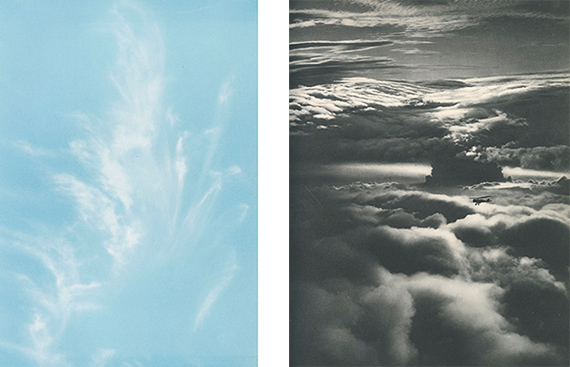
J. Pons, Fundació Concepció Rabell, Medium Cirrus Appearing as Flames, 9:55am, Barcelona, 1 September 1923, photomechanical print
Manfred Curry, A Travers les Nuages, 1931; book
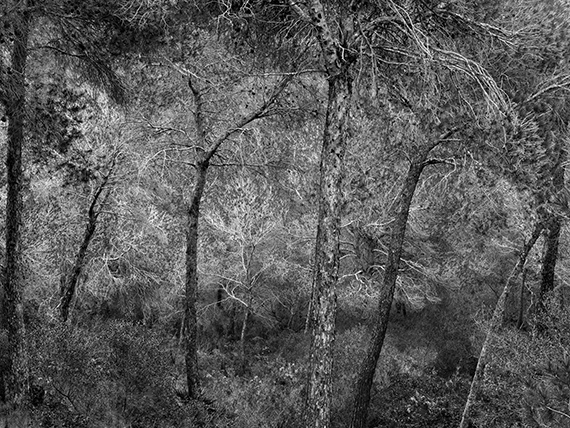
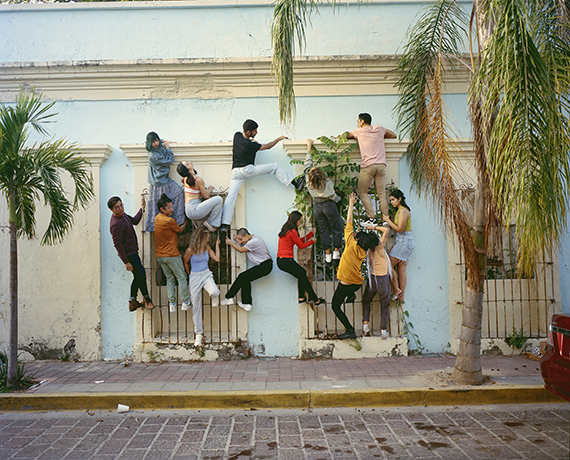
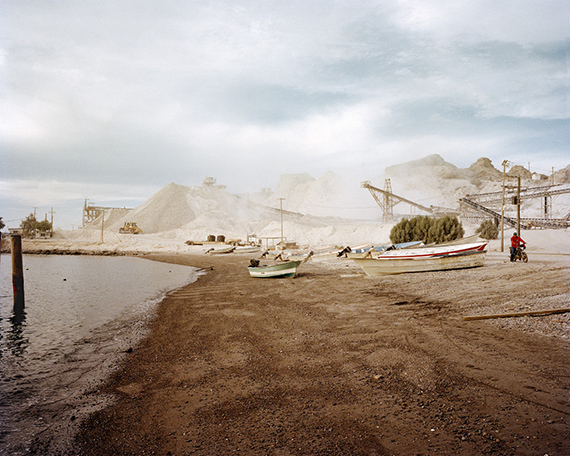
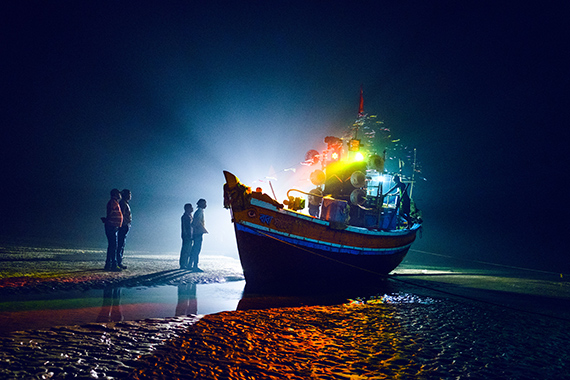
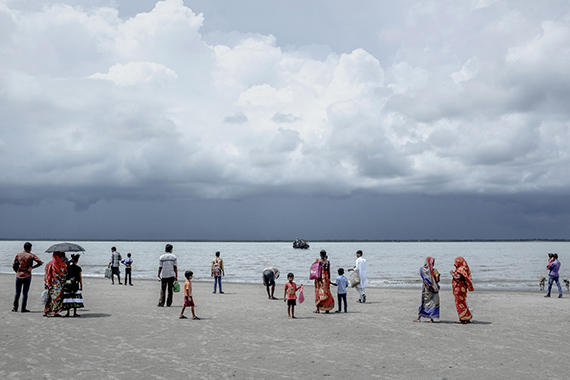
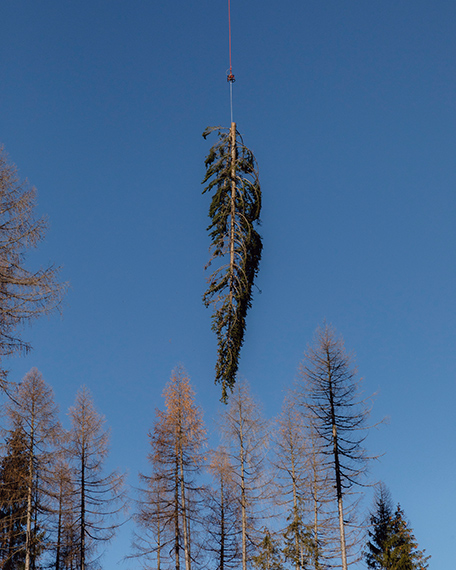
A helicopter removes a fallen tree from a path near Digonera.
Digonera (Belluno), 2020
© Matteo de Mayda - There’s no calm after the storm (2019-2023)
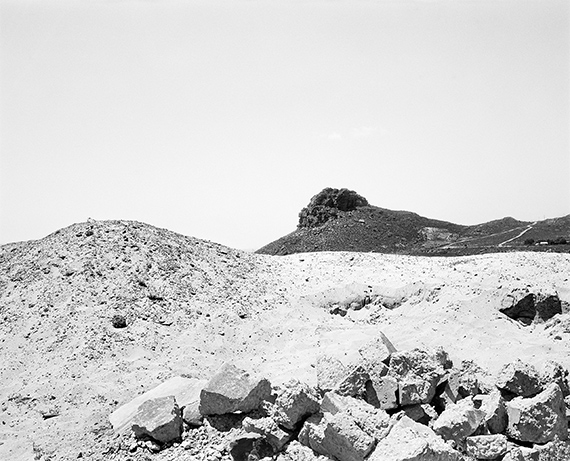
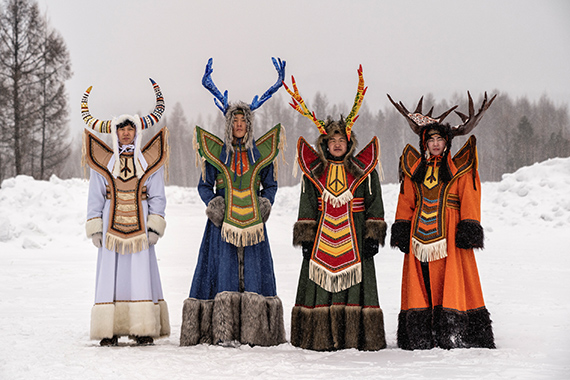
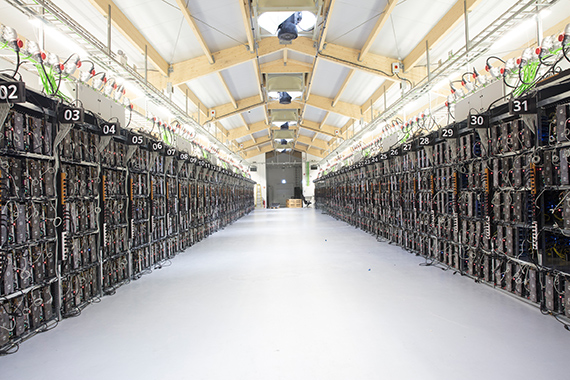
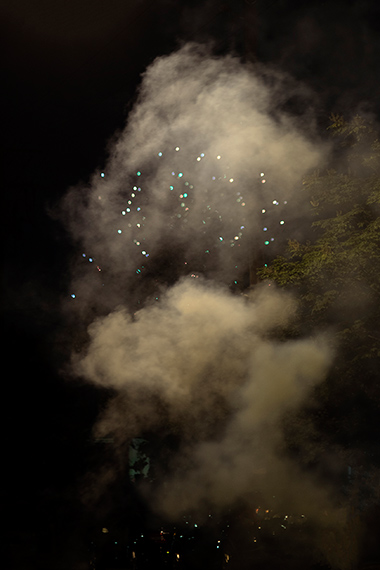
33.9°C max temperature, 57% humidity, 19 km/h wind speed;
Courtesy of Galerie Miranda and the artist
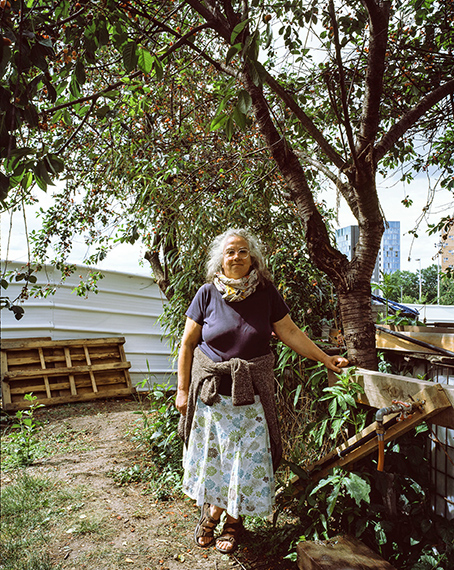
Dolores Mijatovic, jardinière à la tête du mouvement de défense
des Jardins ouvriers des Vertus, Aubervilliers, 29 mai 2022
Aubervilliers, 29 mai 2022
Courtesy The artist & Air de Paris, Romainville
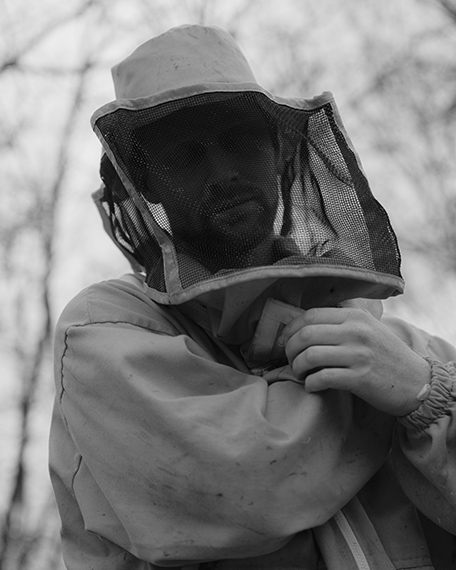
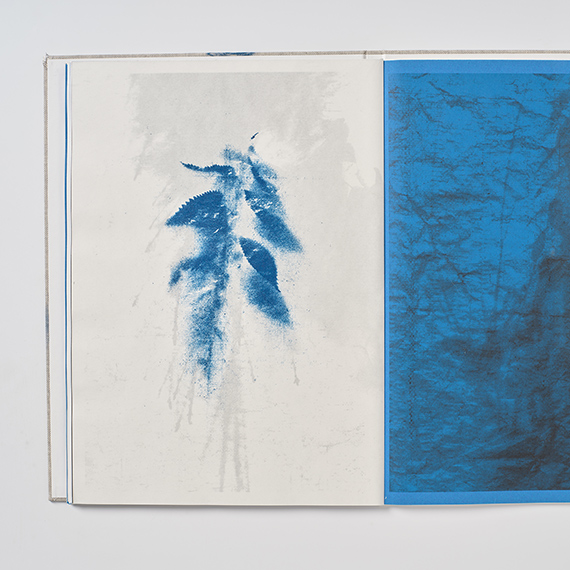
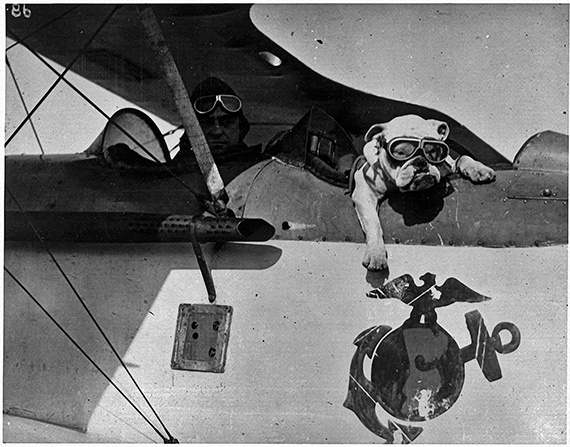
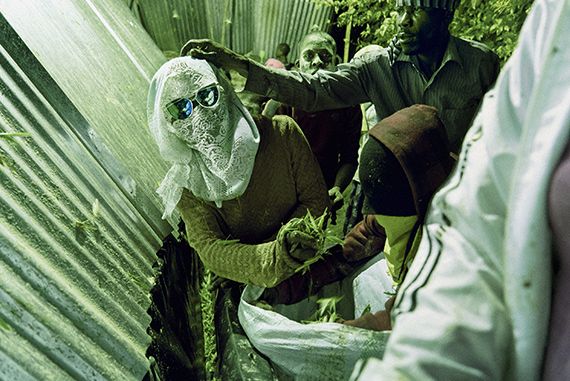
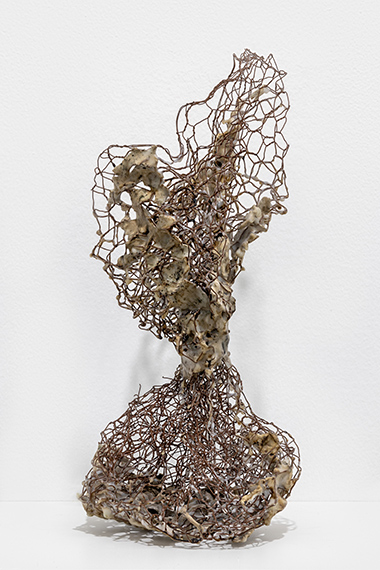
rosmarino ossidi pigmenti bitume cera ferro argilla - cm37x16
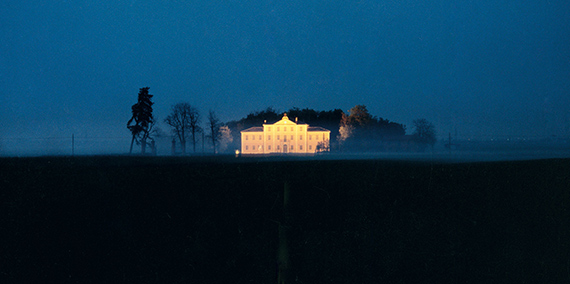
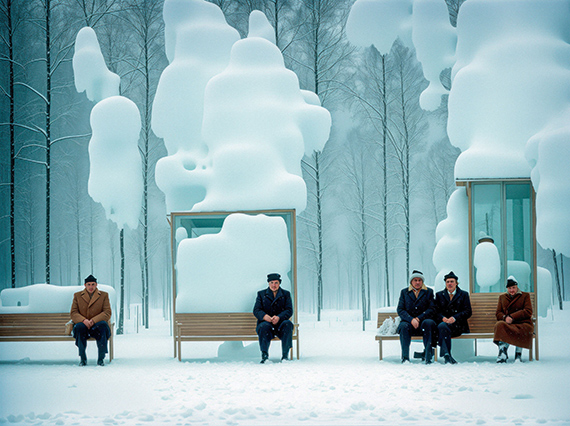
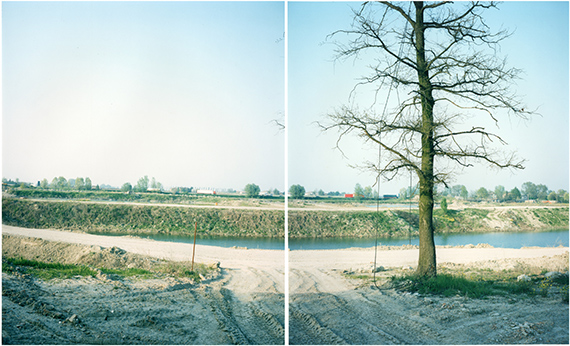
Courtesy Associazione Linea di Confine per la Fotografia Contemporanea, Rubiera, RE
© Walter Niedermayr
